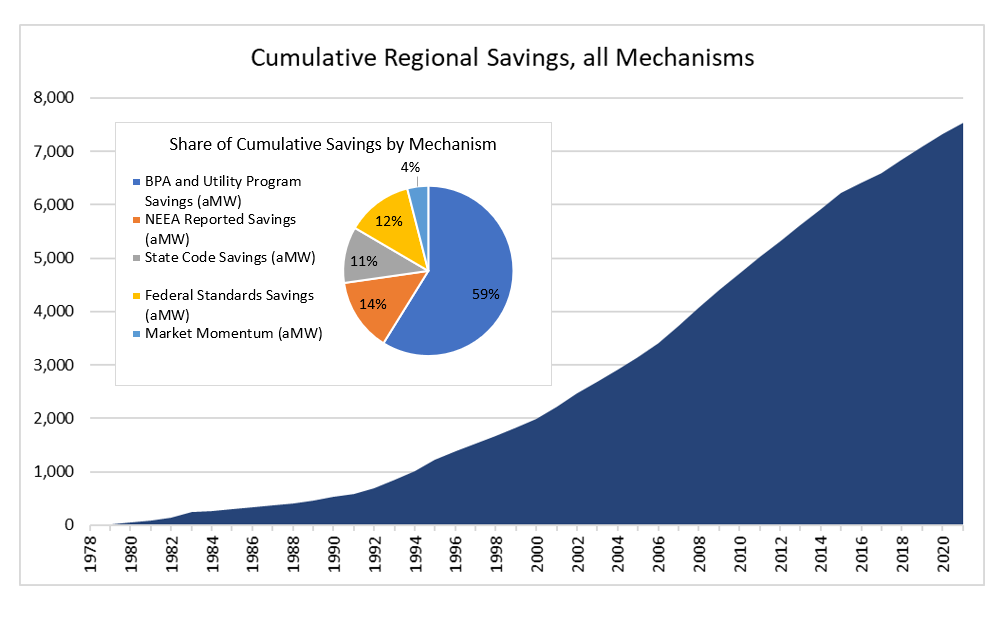Summary of Council's Tracking of Conservation
In its charter the RTF is tasked with annually surveying the region’s utilities, Bonneville Power Administration, NEEA, and system benefit charge administrators like Energy Trust of Oregon on their efficiency achievements. The RTF supports the compiling of the data into a Regional Conservation Progress (RCP) report, and staff present it to the Council to offer a full picture of the region’s progress against the power plan’s efficiency goals. 2021 is the final year of the Seventh Plan period, with 2022 being the first year reporting towards the 2021 Power Plan. The conservation goals in the Seventh Power Plan are below:
| 2016-2017 | 2018-2019 | 2020-2021 | |
| Annual Energy (aMW) | 370 | 460 | 570 |
| Cumulative Energy (aMW) | 370 | 830 | 1400 |
Expand the ⊕ navigation above for other years' reports.
Cumulative Conservation Achievements and the 7th Plan
2021 RCP Workbook Presentation Submitted to the Council
As a region, over the last six years, the Northwest has saved 1,305 aMW of energy as a result of energy measures. This total represents utility program savings, NEEA reported savings, momentum savings, and savings from codes and standards with an adjustment for double and under counting. The chart to the right illustrates how these regional savings compare to the full six-year conservation goal of 1400 aMW set by the Seventh Power Plan. Below that is a break out of annual efficiency achievements as compared to annual Seventh Plan milestones.
In total, this is a 95 average megawatt shortfall from the six-year goal set out in the 2016 plan, a goal that was developed to help ensure an adequate, efficient, economical, and reliable power supply.

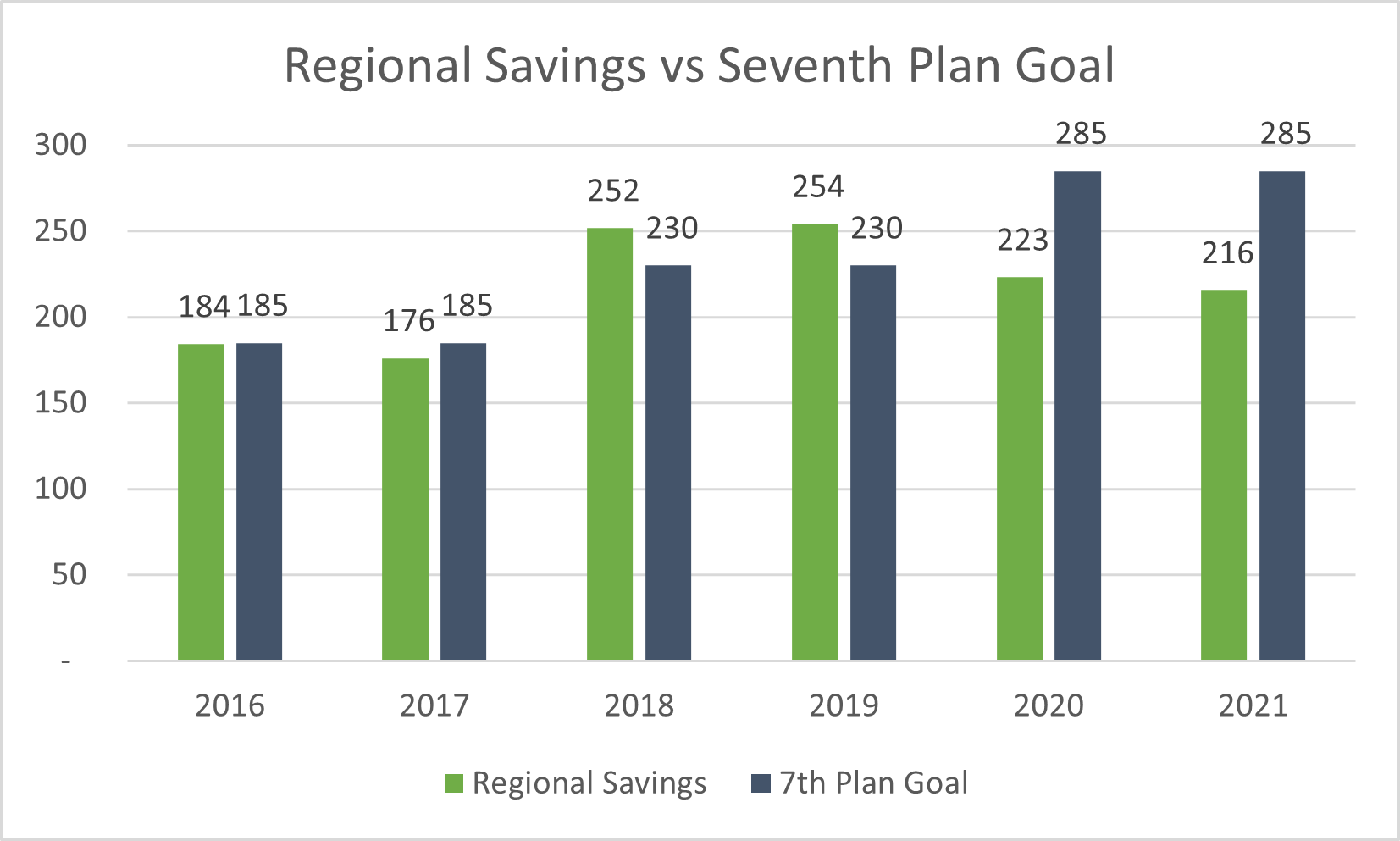
COVID Impacts
Covid-19 and the ongoing global pandemic played a role in this year's conservation achievements. Restrictions, safety concerns, and supply chain issues put additional strain on utility EE programs and negatively impacted their ability to achieve savings. Some programs increased incentives for certain measures as a way of working towards savings goals. The pandemic, however, doesn't appear to be the sole driver of lagging savings. Even if conservation in 2020 and 2021 had looked more like 2018 (the best year to date in this 7th Plan period), the region would still have missed the 7th Plan goal. Budgets being largely flat or declining while milestones and costs increased would likely have resulted in this miss regardless of Covid and its effects.
Program Savings and Expenditures
As made apparent in the chart to the right, the region has been seeing declining program savings, in proportion with flat or declining expenditures. This trend became more stark over the past two years with the dip in savings, but it's a direction we've been seeing and reporting since midway through the action plan period and anticipate to continue based on forecasted savings and budgets from regional utilities.
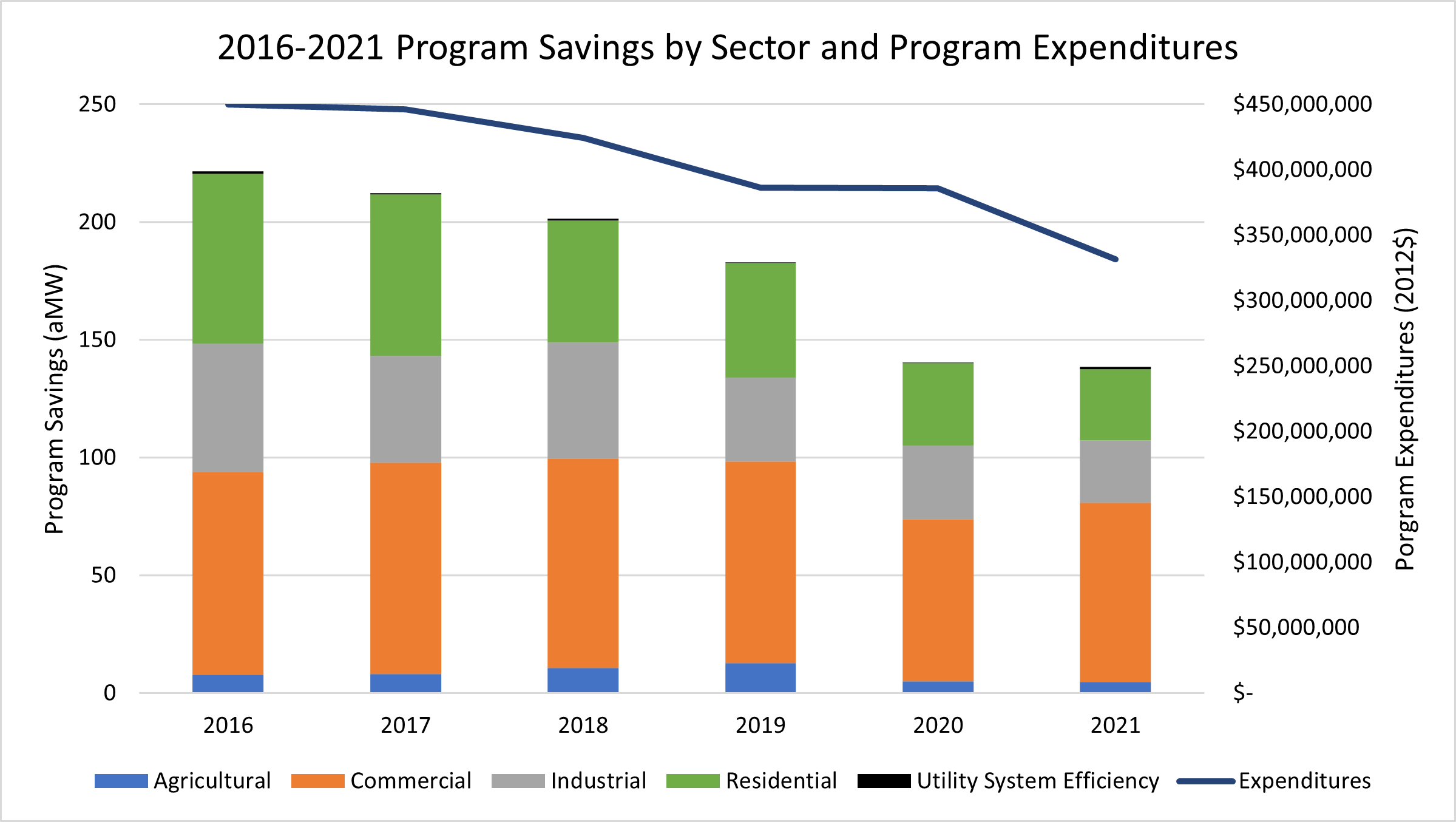
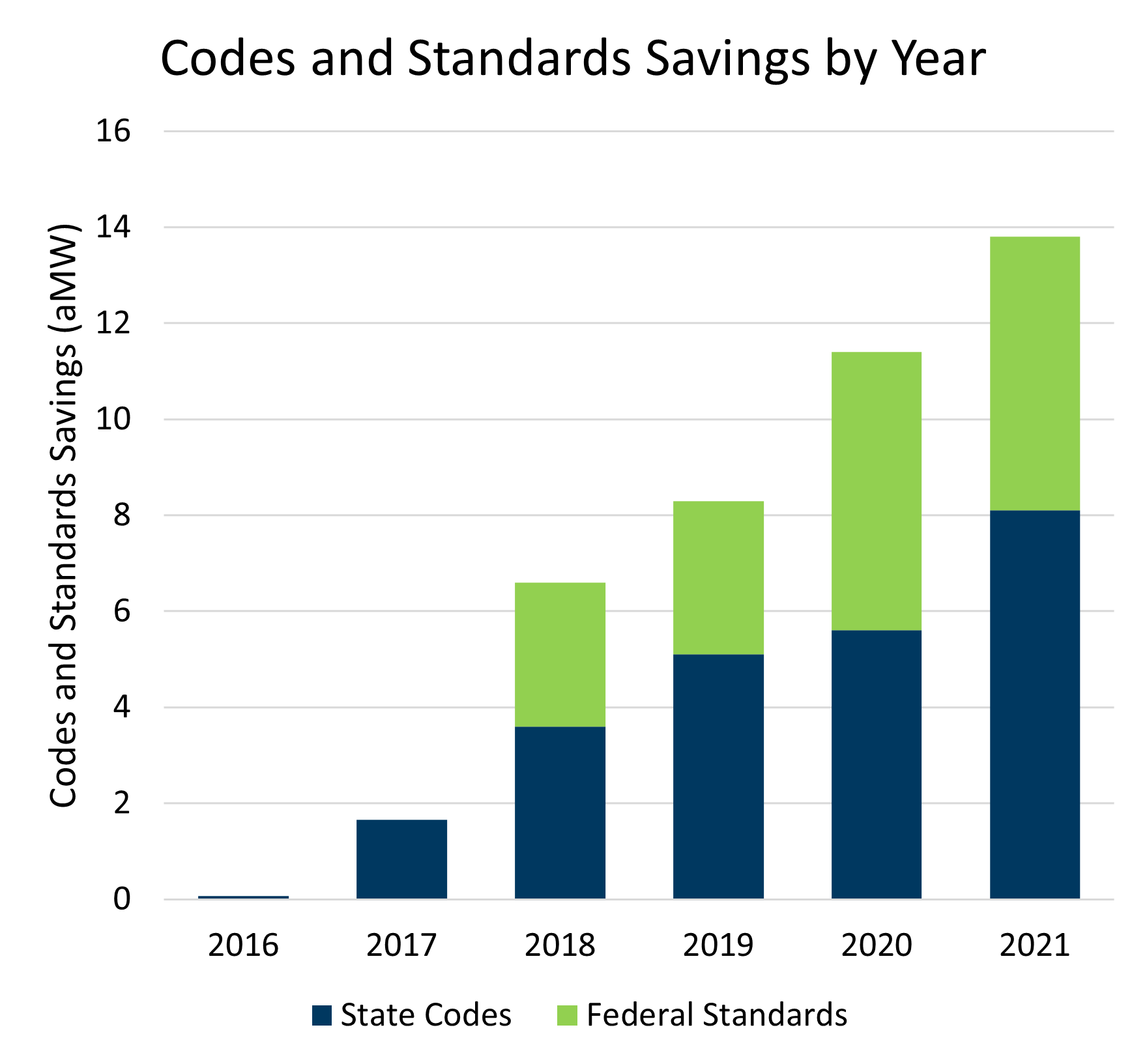
Codes & Standards
The chart to the left shows savings from new state codes and federal standards adopted since the development of the Seventh Plan potential. All these savings represent real efficiency for the region driven in large part by historic program activity and NEEAs initiatives driving upstream market change and historic program achievements. These savings are delivered over the long term and as a result are often underrepresented by the RCPs short-term, annual review of regional energy efficiency. However, they're a result of hard work and dedication on the part of numerous regional actors and have and will continue to play an essential role in the Northwest's energy efficiency achievements.
Looking forward, many of these savings are now captured by the 2021 Power Plan baseline.
Regional Capacity Savings
Obtaining energy efficiency is getting more complex and expensive. Thanks to the region's strong commitment to developing conservation as a resource, many of the so-called low hanging fruit markets have been transformed and utilities are having to get more creative to continue to achieve efficiency savings. However, that's not to say that there is no longer a benefit to pursuing EE. As we see in the chart to the right, efficiency continues to contribute significant capacity savings to the region especially in the winter. The region willl have to get more targeted and intentional with how and when conservation is pursued, but it will remain an important resource for the region especially in regards to flexibility and resiliency.
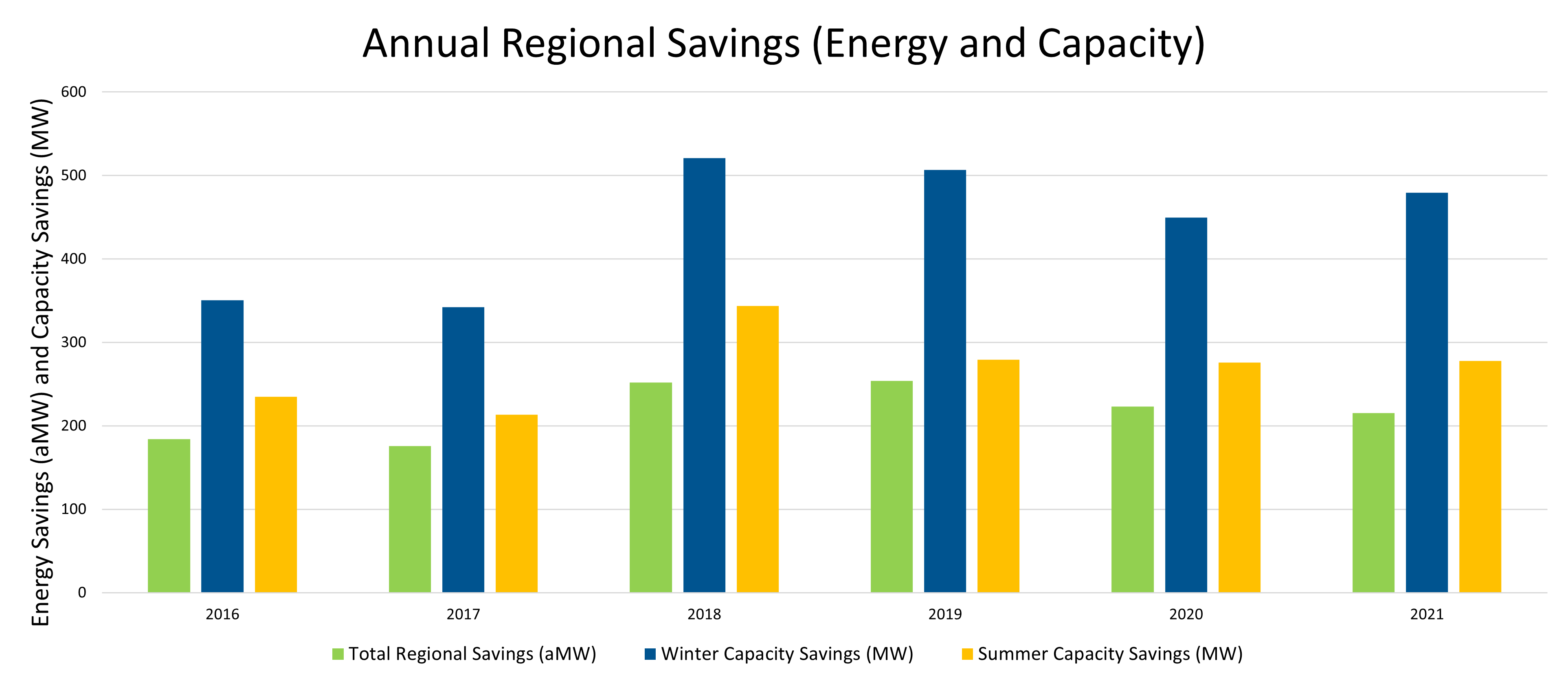
*savings at 6:00 pm (winter or summer)
Historical Regional Savings
Energy Efficiency has provided over 7,500 aMW of savings since 1978. It has helped the region avoid more than 24 million metric tons of C02 emissions and has saved the equivalent of 5.5 million homes' annual energy consumption. You can see in the chart below, utility efficiency programs have been the key driver of energy savings in the region, with NEEA and their market transformation work emerging in recent years as a significant contributor of regional savings.
